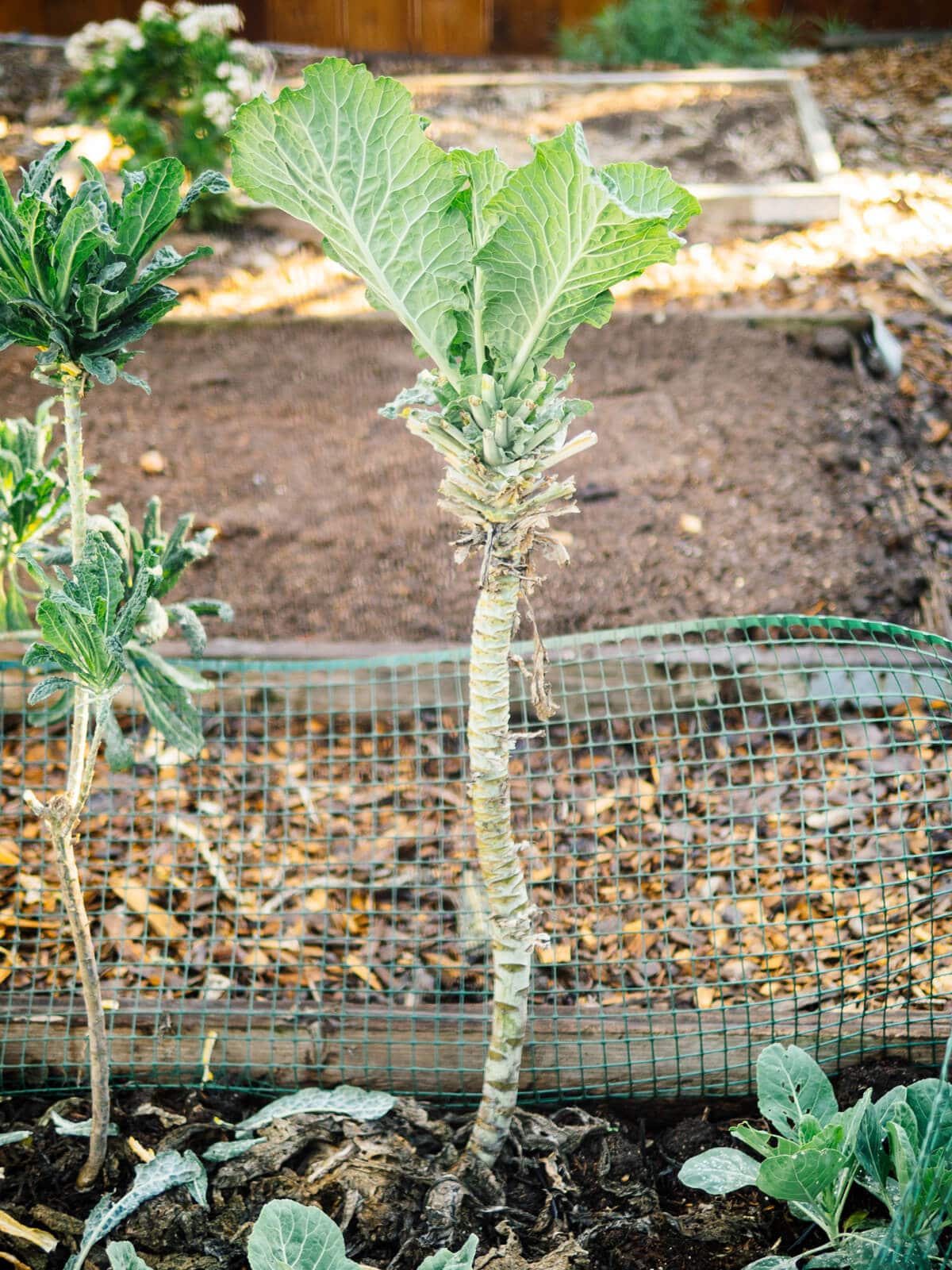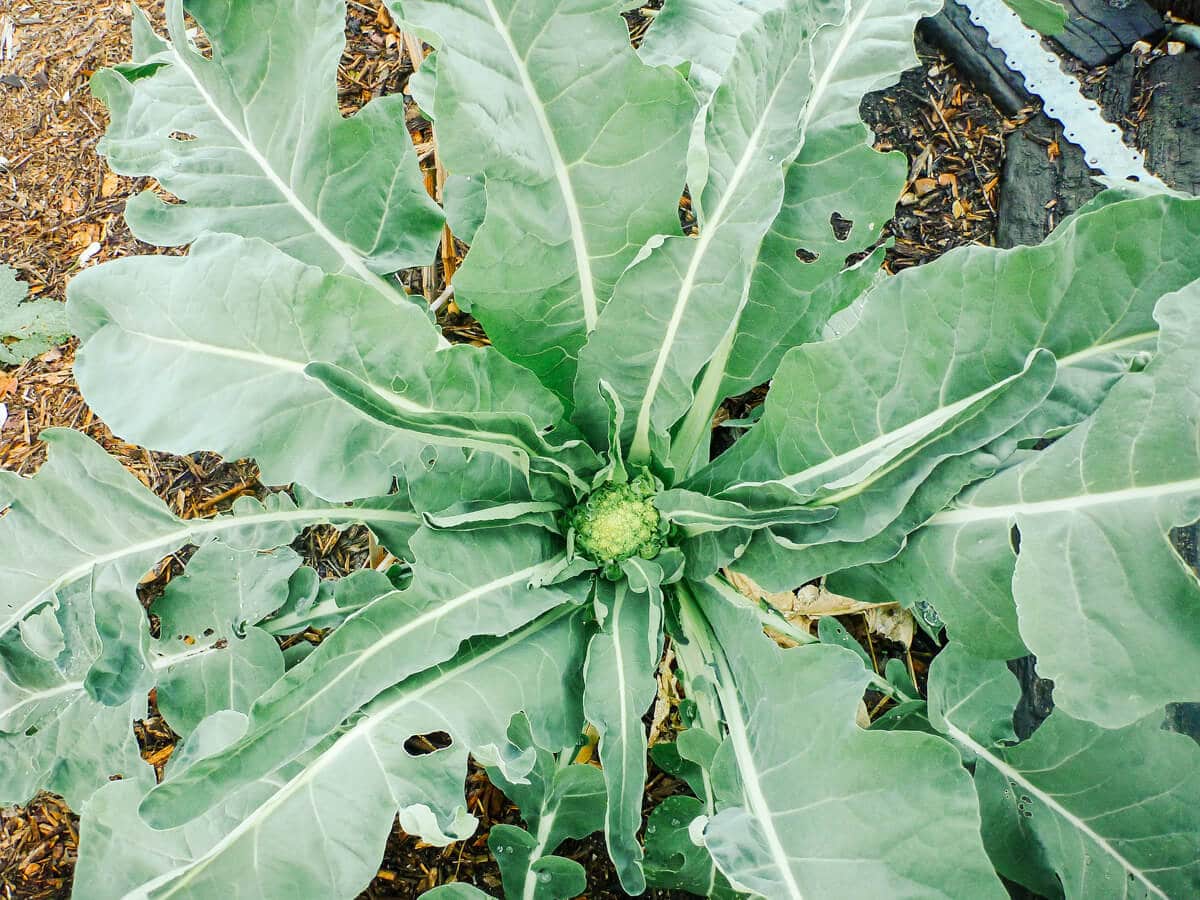And I’m talking the broad outer leaves that surround a head of broccoli, not the few tiny and uninspiring leaves stuck to the head of store-bought broccoli.
Most people don’t realize that you can eat broccoli leaves, or that they’re just as edible and delicious as the broccoli head itself. And I can’t blame them, considering broccoli always comes in a neat little package at the grocery store or farmers’ market.
It’s a surprise to many people that the broccoli we buy and eat is actually a very small portion of the plant itself. So where does the rest of it go?
Most parts of the broccoli plant (Brassica oleracea var. italica) can be eaten, from the immature flowers to the stalks and even the leaves. The only parts of broccoli that have been shown to be poisonous are the seeds and roots.

How to harvest broccoli leaves
If you grow your own broccoli, you can start to harvest a few of the outer (older) leaves every week once they reach 4 to 6 inches long.
After the plant forms a crown, you can harvest the broccoli head but continue to pick the leaves until you can no longer keep up… seriously!
Broccoli is an incredible cut-and-come-again crop, and new leaves remain tender even when the rest of the plant is getting tall and unwieldy.
When I lived in Southern California, I could keep my broccoli growing year-round in the mild coastal climate (zone 10b).
These second-year plants were still thriving despite having all the crowns harvested moons ago, and on some of the plants, I’d stripped them clean of leaves to cook with!

(It’s hard to tell without a frame of reference, but the tallest broccoli plant in the back had grown almost 5 feet tall!)
Let’s just say… we got our fill and didn’t grow anymore broccoli the following year.

Health benefits of broccoli and broccoli leaves
Broccoli is considered one of the most nutritious vegetables on the market, providing 100 percent of the daily value of vitamin C in a single cup of chopped broccoli.
It contains a full nutritional lineup of B vitamins, potassium, iron, calcium, minerals, and fiber.
When compared to the stems, the florets have a higher concentration of protective phytochemicals like beta carotene and sulforaphane (the latter of which has been shown to protect against certain cancers).
But broccoli leaves are their own superfood, with even higher amounts of beta carotene than the florets, along with vitamin A (which is important for vision and skin health) and phytonutrients that aren’t found in the florets or stems.
That means if you’re a gardener who’s used to composting broccoli leaves or ignoring them while you wait for the heads to form, you are missing out on the many free health benefits of this amazing crop.

4 Reasons to Eat Broccoli Leaves |I Can’t STOP Eating Them Now!|
FAQ
Is it safe to eat broccoli leaves?
Are broccoli stems poisonous?
Are broccoli leaf stalks edible?
Is it safe to eat flowering broccoli?
Is broccoli bad for You?
But when you start to dig a bit deeper, an alarming picture emerges for just how bad broccoli is for you. To start with, broccoli is a well-described goitrogen. Goitrogens are chemicals that suppress the function of the thyroid gland by interfering with iodine uptake, a key mineral needed to make thyroid hormone.
What are the side effects of eating broccoli in large quantities?
The most common side effect of eating broccoli in large quantities is gas or bowel irritation, caused by broccoli’s high amounts of fiber.
Can you eat broccoli leaves?
If you want to try eating broccoli leaves, you need to know proper harvest and storage technique. Harvest leaves in the morning or evening so the cut area can heal in the coolest part of the day. Never harvest more than 1/3 of the leaves, or the plant will suffer. Use clean implements to sever the leaf just before the petiole meets the main stem.
Can you eat too much Broccoli?
Even though there are some hypothetical risks from eating too much broccoli, they are more than outweighed by the health benefits. That is what matters here: the overall balance for what it means to your health and broccoli breaks the scales here for health benefits.
